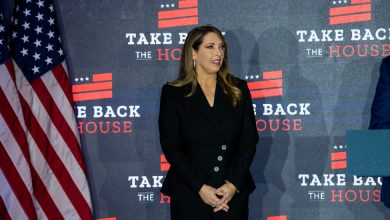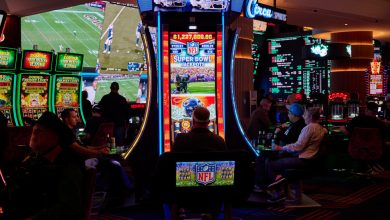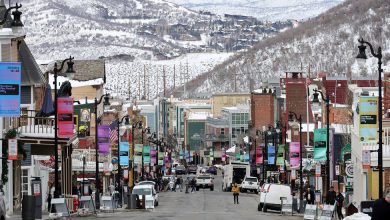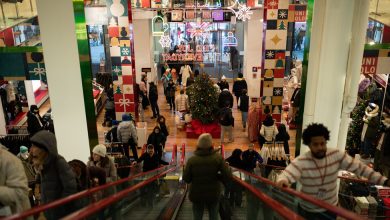The Envy Office: Can Instagrammable Design Lure Young Workers Back?
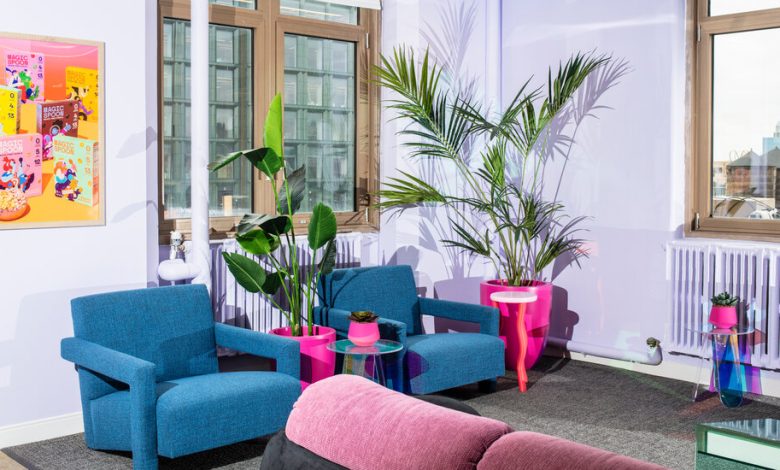
Inside the “blueberry muffin” conference room, the walls are, naturally, painted blue. Not just any blue — it’s the calming color you might find a baby’s bedroom, what the paint can refers to as “sea to shining sea.” Anchoring the room is a table, red and oblong, adorned with fake succulents in purple pots.
Nearby is the “fruity” conference room, with “razzle dazzle” red walls and vintage chairs upholstered in yellow pineapple printed cloth. Down the hallway is “maple waffle,” the room where the company holds its more serious meetings with investors. There, the walls are a subdued shade of brown.
This is the office of the cereal brand Magic Spoon, which was introduced in 2019 and, starting last year, called its roughly 50 employees back to in-person work, at least two days a week. At Magic Spoon’s SoHo space, which was designed right around the company’s return-to-office push, the conference rooms are meant to feel like cereal boxes.
“One of our core company values is, ‘Be a Froot Loop in a world of Cheerios,’” said Greg Sewitz, a Magic Spoon co-founder. “We wanted the office to underline that.”
Their space also reflects what designers, executives and workers describe as a trend that’s not entirely new, but is now becoming the go-to among certain start-ups, tech companies and other moneyed employers vying for young talent. It’s what might be called the Envy Office — what happens when companies try to combine the comforts of a living room and the glamour of a vacation. These spaces — often characterized by colorful walls, upholstered furniture and carefully curated coffee table books — lure workers in with plenty of opportunities to fill their social feeds with photos taken at the workplace.
“It’s taking cues from home, from hospitality, from Pinterest,” said Jordan Goldstein, a co-managing principal at Gensler, one of the world’s largest architecture firms, where clients have lately been asking for greenery and soft seating. He cited, as an example, the new headquarters of Marriott, which Gensler redesigned to incorporate banquettes, library nooks and a tree growing through the middle of the lobby. Gensler has also recently redone offices for Barclays, Pinterest and LinkedIn in this style.

Laetitia Gorra, left, and Sarah Needleman, the designers of Magic Spoon’s offices.Credit…Bryan Anselm for The New York Times
To some employees, though, all the fake plants, accent walls and stylish dog beds sometimes seem designed to mask the inconvenience of space-conserving arrangements like hot desks, where workers no longer have their own assigned work spaces.
Before the rise of remote work, the designers behind Magic Spoon’s office, Laetitia Gorra, 41, and Sarah Needleman, 33, were the designers for the women’s social club the Wing, a hallmark millennial-pink-drenched palace of throw pillows and color-coded bookshelves, which shut down last year. In 2020, Ms. Gorra founded the design firm Roarke, with Ms. Needleman running its operations. The duo helps executives figure out what an office should look like in a moment when many workers aren’t convinced they need to go to one.
“Our pitch is very much about employee retention,” Ms. Gorra said. “We came from working on our sofas in yoga pants — what can we do to make your employees want to come back to the office?”
It’s a cycle that American workers have seen before: When working norms change, the design of the office goes with them. In fact, in a survey of some 14,000 workers around the globe conducted by Gensler last year, nearly 40 percent said their employers redesigned their offices during the pandemic.
“If you’re looking at the history of the office, you’re looking at the history of changing attitudes toward what constitutes work, who workers should be,” said Craig Robertson, a media historian and author of “The Filing Cabinet.” “The design of an office is shaped by dominant social values.”
As with each previous iteration of workplace aesthetics, including this latest trend, many managers are also trying to achieve a more straightforward goal: get people to spend time at the office.
Cubicle Farm to Open Table
Just over half a century ago, the shiniest new feature of office life was the cubicle.
In the years after World War II, America’s white collar work force was swelling, buoyed by a booming economy and influx of women into the workplace. Management “scientists,” like the efficiency-obsessed Frederick Winslow Taylor, had earlier pushed for companies to treat white-collar work more like factory work. Enter the Action Office: modular office furniture, which became cubes that packed people tightly together.
Cubicle farms, according to office historians like Nikil Saval, reminded people of their place in the power structure, with higher-ups typically allocated more space.




Modular office furniture, which became cubes that packed people tightly together, were introduced in the years after World War II.
“You were surrounded by hundreds of people like you,” said Sheila Liming, an associate professor at Champlain College and the author of the design history book “Office.” “You get this idea that you’re replicable.”
It’s hard to look at a cubicle farm and imagine it prompting the kind of out-of-the-box ideas that companies were craving in the tech world of the 1990s, after Bill Gates and Paul Allen had mythologized Microsoft’s beginnings inside a garage. Tech start-ups wanted workers to break out of their sterile cubes and feel a sense of ownership over their work, a sense of infinite potential growth.
That was partially the notion that gave birth to a new phase of office design: the tech utopia. Carolyn Chen, a sociologist who spent years researching life at Bay Area tech companies, noted some of the physical elements that distinguished their campuses. There were free snacks (peanut-butter cups, potato chips, dried mango) and sometimes booze (beer, frosé). There were nap pods and massage chairs.
Ms. Chen saw one company spend part of its design budget on making the office look grungier. It paid money to expose its bricks and pipes, sending the message to workers that they should adopt a start-up mentality and work overtime.
And because the tech offices of the early 2000s were such social spaces — with happy hours and video games — the takeaway for some workers was that they didn’t need to go home to find leisure or community.
“When you think about the way Google revolutionized the office, it was in the idea that there was a standing invitation for workers to not just do their jobs but spend their free time there as well,” Ms. Liming said. “The word campus is really operative.”
But if there’s anything more appealing than a campus, it’s working from bed. So when the pandemic arrived, and offices became literal homes as opposed to figurative ones, managers had to rethink what it meant to make the office an alluring destination.
‘Live From HQ’
When Magic Spoon’s team moved into the new office earlier this year, Sarah Bourlakas, 26, who was the senior social and community manager, snapped a photo to post on her personal Instagram story with the text: “Live from HQ.”
That Instagrammability isn’t accidental. Brooke Erin Duffy, an associate professor of communication at Cornell University, argues that employers are using social media aesthetics in the same way they’re deploying traditional perks like cold brew, or less traditional ones like the Lizzo concert Google put on for its workers. It’s all corporate image making. Companies now want their office design to be visible not just to employees, but also to everyone on social media, which Ms. Duffy said was about “retaining employees by hyping this fun, enjoyable, hyper-social workplace.”
Hollywood and television used to be the primary sites that advertised to young people the glamour of office life, Ms. Duffy noted. There was “The Devil Wears Prada,” “Mad Men,” “The Internship,” “The Mary Tyler Moore Show,” “The Social Network.”
Now social media is increasingly where people go to romanticize office life — particularly on TikTok, where content creators like “Corporate Natalie” riff on the professional antics that many young people, starting their careers during the pandemic, have yet to experience. More than half of workers say they get a sense of identity from their jobs, according to consistent findings in Gallup polling from 1989 through 2014. It’s no surprise, then, that young people would want to put on their social media profiles what’s so central to their senses of self. And the more trendy an office is, the easier it feels for workers to convey that their careers are more thrilling than the cubicle doldrums chronicled in “Office Space.”
When Ms. Bourlakas photographed Magic Spoon’s new SoHo space, her Instagram followers seemed dazzled.
“So many people commented, like ‘Oh my gosh, it’s so sick,’” said Ms. Bourlakas, who recently left Magic Spoon for another job. “‘It’s so Magic Spoon coded.’”
Dreaming of Cubicle Life
Touring some of these new Envy Offices, where workers hunch over long desks wearing noise-canceling headphones, there are gaps between what workers are getting and what they say want. They have wall decals and curated book collections. What they actually need, some say, is privacy.
A 10-minute walk away from Magic Spoon, the communications agency M&C Saatchi Sport & Entertainment has an office also redesigned by Roarke in 2021. Workers sit at long, communal wooden tables in front of exposed brick and surrounded by a jungle of artificial greenery. Atop a Keith Haring coffee table book sits a single bunch of faux grapes.
Maddy Franklin, 27, a senior art director there, said there were elements of the new office she loved, like its friendliness to dogs. But because of the hot-desk system, she has no place to store personal items.
It can also be tricky to get a spot with a monitor. When Ms. Franklin is working on a big project, to secure a highly coveted seat, “I will aim to get to the office a little earlier,” she said.
Robin Clark, 58, who works as a marketing director at a health care nonprofit, longs for the days before her office transitioned to an open floor plan. When her company did a full redesign in 2018, executives tried to make the space inviting, creating lounge areas with couches in bright colors like orange, teal and lime. But the lack of barriers between desks means Ms. Clark’s workday has an incessant, noisy backdrop: apples crunching, colleagues sneezing. When she started working from home, during the pandemic, she realized what she wanted was peace and quiet.
As she put it: “With cubicle walls you have at least the perception that you have some privacy.”
In an ironic twist, other workers are now also finding themselves nostalgic for the age of the cubicle. Take Jerry Gulla, 56, a senior engineering manager, based in Winchester, Mass, who began his career in 1989 when cubicles were the norm. Over the years, as he worked in offices with open-floor plans and hot-desk systems, he missed being able to customize his desk — himself, not with any help from a design firm.
Mr. Gulla is a fan of the TV show “The Expanse,” and he used to have a model ship from the show in his work space. “Somebody might be walking by and see that you’re a fan,” he recalled. “So you kind of strike up a conversation and you meet somebody new that way.”
To Mr. Gulla, the office ideal is simple: “It’s just a place that’s conducive to getting work done.”

